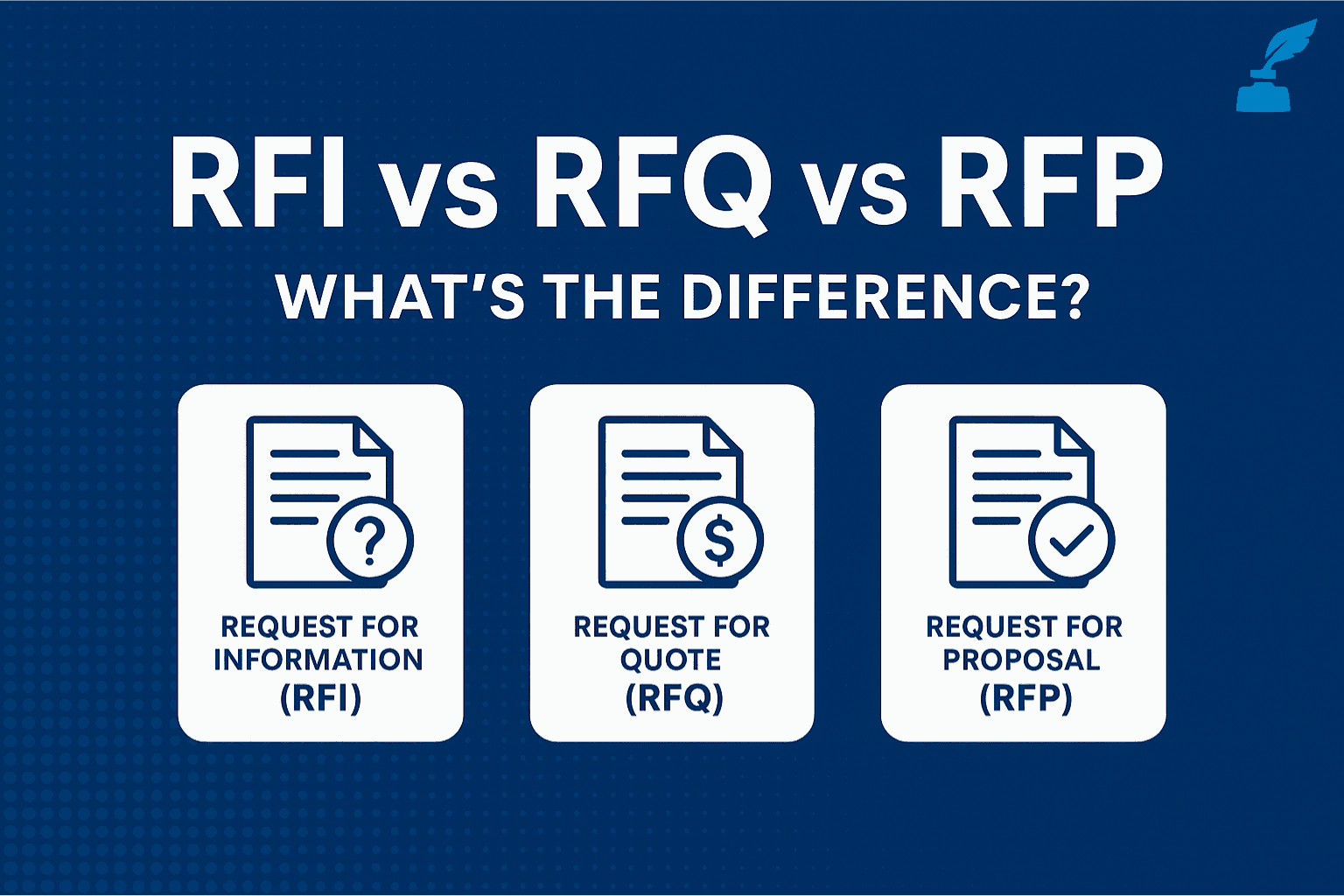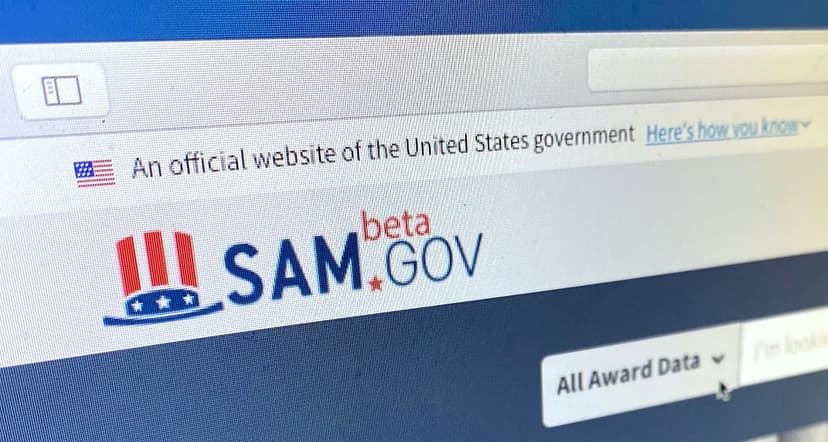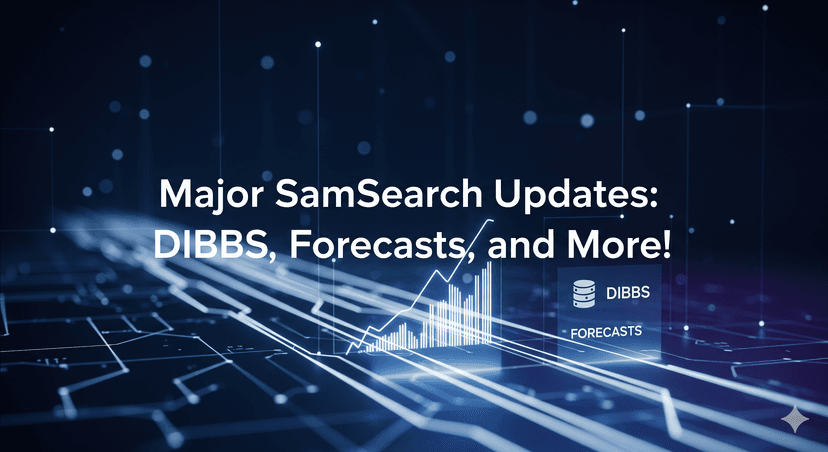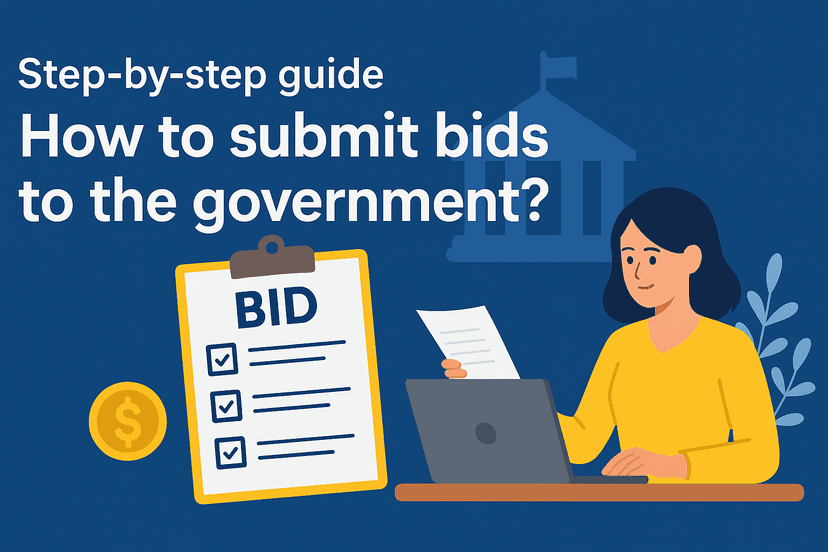RFI vs RFQ vs RFP: What’s the Difference

🎥 Prefer video? Watch the full breakdown here:
When it comes to government contracting, understanding the difference between RFI, RFQ, and RFP is critical to winning new business. These three types of procurement notices are often grouped together under the umbrella term RFX, but they each serve very different purposes in the federal acquisition lifecycle.
In this guide, we'll break down:
- What each notice type means
- When and why they’re used
- How small businesses should respond
- How to find these opportunities using Sam.gov or SamSearch
Whether you’re a new federal contractor or looking to improve your strategy, this blog will help you navigate RFI vs RFQ vs RFP with confidence.
🧠 What Is an RFI (Request for Information)?
An RFI is a pre-solicitation notice used during the early planning stages of a government acquisition. It’s part of the agency’s market research process to understand industry capabilities, interest, and potential approaches to solving their problem.
🔍 Key Characteristics:
- Not a formal solicitation (no contract award expected)
- Helps agencies assess industry capacity and feedback
- Frequently issued alongside or instead of a Sources Sought Notice
🎯 Why Respond to an RFI?
While RFIs don’t lead directly to contracts, responding to them is strategic:
- Get on the agency’s radar early
- Help shape the future RFP/RFQ requirements
- Highlight your NAICS code, certifications (e.g., 8(a), HUBZone, WOSB), and capabilities
📢 What Is a Sources Sought Notice?
Often paired with or used interchangeably with an RFI, a Sources Sought Notice is issued to identify qualified vendors, especially those in targeted socio-economic categories (e.g., small business set-asides).
If your business falls under categories like:
- 8(a)
- Woman-Owned Small Business (WOSB)
- Service-Disabled Veteran-Owned (SDVOSB)
- HUBZone
…then responding to a Sources Sought is a key opportunity to position yourself.
💰 What Is an RFQ (Request for Quote)?
An RFQ is used when the government knows exactly what it wants and is looking for price quotes for a straightforward purchase — typically under the Simplified Acquisition Threshold (often under $250,000).
🔧 RFQ Characteristics:
- Focused on price and delivery
- Response window is usually 3 to 14 days
- Awards are often based on lowest price technically acceptable (LPTA)
✅ Tips for Responding to an RFQ:
- Move fast — timelines are short
- Highlight your pricing and delivery capabilities
- Ensure compliance with formatting and submission instructions
🧾 What Is an RFP (Request for Proposal)?
The RFP is used for complex projects where the government needs more than just pricing — they want a comprehensive proposal that outlines your approach, technical solution, and experience.
📋 RFP Characteristics:
- Involves detailed evaluation criteria
- Government considers technical merit, past performance, and price
- No negotiations — you must follow instructions exactly
📌 RFP Strategy:
- Use a customized capability statement
- Align your proposal with the evaluation factors
- Demonstrate your experience through past performance examples
🆚 Summary Table: RFI vs RFQ vs RFP
| Notice Type | Purpose | When Used |
|---|---|---|
| RFI / Sources Sought | Market research | Planning phase |
| RFQ | Price quote | Simplified acquisitions |
| RFP | Full proposal | Complex projects |
🧩 How to Respond Effectively
To make the most of these opportunities:
1. Register on SAM.gov
Make sure your SAM.gov profile is active and complete. Your capabilities, NAICS codes, and certifications should be clearly listed.
2. Submit a Targeted Response
Always tailor your response — whether it’s to an RFI, RFQ, or RFP — to the specific requirements. Generic replies won’t stand out.
3. Follow Instructions
One of the biggest reasons vendors lose opportunities? They fail to follow the formatting or submission requirements. Compliance is non-negotiable in federal contracting.
🔍 How to Search for RFI, RFQ, and RFP Opportunities
You can use SAM.gov to search for open procurement notices — but it's not always easy to navigate. If you're overwhelmed by clunky filters and outdated UI, you're not alone.
That’s where SamSearch comes in.
✅ Use SamSearch to:
- Search federal, state, local, and city-level opportunities
- Instantly chat with an AI assistant to understand notices
- Draft proposals using AI-powered writing tools
- Track responses using a built-in Kanban board
About Samsearch
Samsearch is an all-in-one platform that streamlines the entire government contracting process. Our solution brings together discovery, management, compliance, and proposal drafting — eliminating the need for multiple disjointed government contracting softwares.













